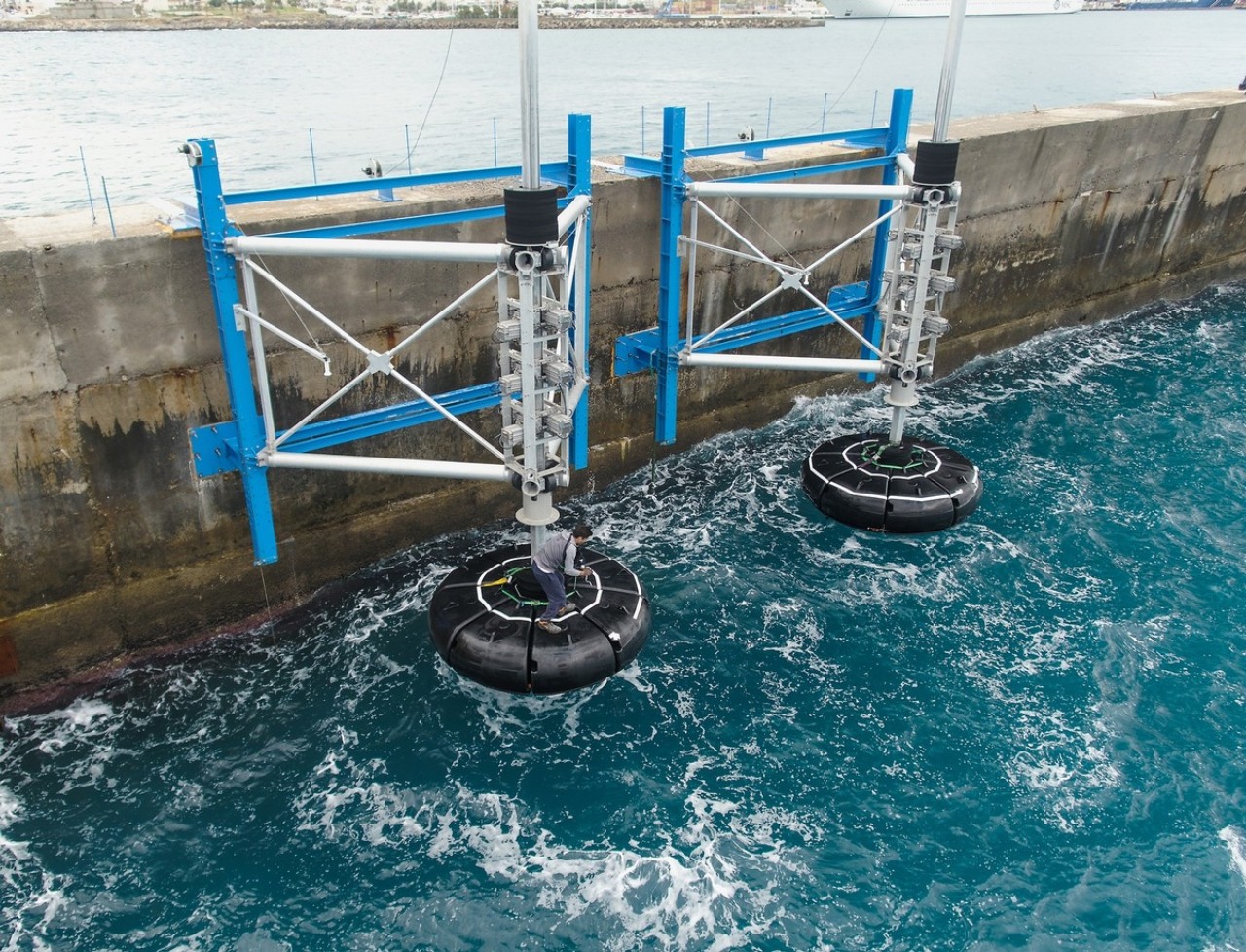
Intelligent algorithms for the energy transition
With a Munich start-up, our Prof. Christoph Hackl and his team are developing intelligent algorithms that ensure that electricity from wave power plants can be efficiently and reliably fed into the power grid.
With the Munich start up SINN Power GmbH, Hackl and research assistant Simon Krüner are developing control systems for power electronics for sustainable electricity generation.
In principle, electricity generation at sea is simple: the planned wave power plant consists of several rows of vertical poles that are connected to each other and anchored to the seabed. On each pole there is a float that is moved up and down by the waves. This drives rollers that are attached between the float and the pole. Each roller is connected to a generator that converts the movement into electrical energy. As the rollers move up and down, the direction of rotation changes. That is why the generators produce three-phase current, the frequency of which changes constantly depending on the length of the ocean waves.
This electricity cannot be easily fed into the grid - for this, three-phase current with a constant frequency of 50 hertz is needed, which corresponds to 50 oscillations per second. The electricity generated in the wave power plant must therefore first be converted. "From a purely technical point of view, this is not a problem: you need a converter that turns the primary three-phase current into direct current, as well as a second converter that, together with a mains filter, generates 50 Hertz three-phase current.
Read more details in the published article.